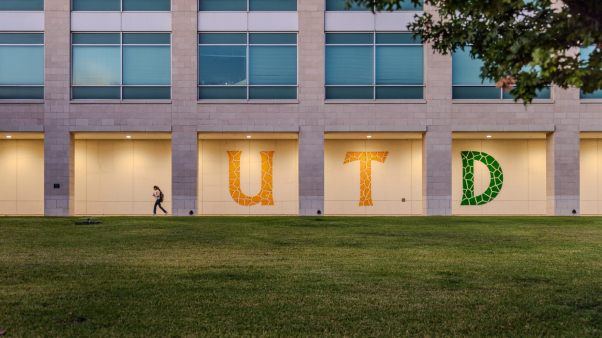I get this question a lot: Does seeing so many movies decrease your appreciation for them?
It’s a hard question to answer. No. Yes. Maybe. It’s tricky to tell. On the one hand, part of the job is developing the ability to—as often as possible—walk into every theater with fresh eyes and a firm belief that this movie could be great.
On the other hand, of course seeing so many movies has to change the way you see them—hopefully for the better, but not necessarily. Critics are people, and they get jaded or cranky or tired or are in the wrong mood for the movie. Great critics are people willing to hold their opinions with an open hand, knowing that their reaction might change in a year or an hour.
But particularly at a festival, when you’re seeing many films a day, shivering in the cold, and staying up too late writing, it can be tricky for a particular film to rise above the others. What helps is when the film engages your emotions in a powerful way, which leaves an imprint not merely on your analytical mind but also your emotions.
My fourth day at Sundance was filled with movies that provoked very different emotions.
Sing Street
John Carney made Once on a shoestring while he was living in his parents’ house, and it premiered at Sundance in 2007. Sing Street is his latest, and shares a lot with Once. It’s set in Dublin and filled with music and humor—but this time, the protagonist is a teenage boy in the middle of the 1980s obsessed with the music of the time, and Carney says the film is autobiographical.
Carney’s musical films feature people hard on their luck finding not salvation, but maybe redemption of a bittersweet sort in their music. Once was about a “Broken-Hearted Hoover Fixer Sucker Guy” and an immigrant. In Begin Again, the characters played by Keira Knightley and Mark Ruffalo are trying to bounce back after hitting their personal rock-bottoms. In Sing Street, our young hero’s family is breaking apart amidst the economic hardships of 1980s Ireland, and he’s forced to go to a new school, where he’s picked on by both the headmaster and the bully, but somehow gathers up the courage to talk to the cool girl who sits on the stoop across the street. By way of introduction, he invites her to be in a music video for his band. And then he has to form a band.
The music in Sing Street is all about the 1980s (one running joke has the boys in the band changing their “looks” every time they encounter a new musical influence), and with new original songs co-written by Carney, it’s a complete delight. Every time you think it can’t get any more fun, it does.
Furthermore, it’s a story about young people getting the help they need to escape a dead-end existence. That doesn’t happen in quite the way you might expect in a movie about forming a band. But the film is better and more realistic for it: just as in life, we don’t have any guarantee that better days are ahead, but the movie’s optimism resulted in a crowd full of moviegoers (at a 9:00am screening!) on their feet cheering, singing, and dancing along with the end credits.
Christine
 Joe Anderson
Joe AndersonFrom there I scrambled to get to Christine, the highly-anticipated film about Christine Chubbuck, the Sarasota TV news reporter who killed herself on air in 1974. (Actually, in a strange twist, Christine is one of two films about Chubbuck in the festival; I will write about the other one soon.)
The film stars Rebecca Hall as Chubbuck, and its goal is not so much to explain her actions as to recreate within us Chubbuck’s mental state. By the time we meet her, Christine has moved to Sarasota and in with her mother. She’s battling her boss constantly—she wants to cover stories that should matter to the community (zoning laws, community matters, even human interest), and he wants her to help boost ratings by following the dictum “if it bleeds, it leads.”
“There’s a reason this concept is catching on in the culture right now,” he says. “We need higher ratings. How do we get them? Juicier stories.”
At this point every journalist in the room was cringing, because one could easily argue the situation has gotten much worse since 1974, with great journalistic outlets struggling for survival while clickbait sites proliferate. But as the story unfolds, we realize there’s a lot more animating Christine’s increased agitation. She is lonely. She has trouble connecting with people. She had a breakdown at her last job.
Chubbuck’s story is widely known enough that we know where the film is headed. The story is all in how it gets there, and the film exhibits considerable restraint, never explaining things to us, requiring us to piece together the backstory ourselves. There are no flashbacks; there are no title cards at the end. This is an unsettling film, and though I have trouble imagining the target audience, I think it’s worth seeing.
The Birth of a Nation
 Elliot Davis
Elliot DavisI’ve written a dispatch on this remarkable film, but let me just say that it had a whole lot of people sobbing, and I wasn’t sure the standing ovation was ever going to end.
Holy Hell
To close the day, I saw Holy Hell, a documentary made by a former adherent of “The Buddhafield.” The film tells the story of the rise and deterioration of the cult from the inside, with footage taken by the filmmaker while he was a true believer and commentary from a number of former members.
The film isn’t very strong as a film, mostly because the structure leaves a lot of questions hanging; that’s not all that surprising, but it does suggest that it may partly take an outsider to really get to the root of cult behavior. (I couldn’t help thinking about Going Clear, the Scientology documentary that played at Sundance last year.) Near the end it begins to feel more like a tribute film or a home movie about a family, and at that point it lost a lot of the audience.
But it is rather good at letting people talk about what attracted them to the figure at the center of the cult, a classic narcissist and abuser (mentally and sexually) who keeps changing his name and managed, at his peak, to have 150 people practically waiting on him hand and foot, beginning in the 1980s. (After the group broke apart, he moved to Hawaii, where the camera finds him leading a new group today.)

Some of the people interviewed were part of the cult for over two decades and are still visibly reluctant to call it that. All of them speak of the need that drew them to the group—for stability, for acceptance, for meaning in life. All of them express surprise that they stayed, but are still, in some sense, grateful for the experience.
Holy Hell would have done better to dig past some of these assumptions—but, again, it’s easy to see why it doesn’t. Still, it leaves a lot of lingering questions about the nature of cults and why they change. As the proliferation of movies and TV shows about cults shows, we’re really curious.
Caveat Spectator
Sing Street includes teenagers and adults swearing and talking about sex and smoking and drugs and drinking. Christine has some profanity as well as the disturbing suicide. The Birth of a Nation has a scene with some nudity, a handful of profanities, and many disturbing scenes involving brutality and blood. Holy Hell includes some nudity and profanity, as well as descriptions of non-consensual homosexual acts.
Our Sundance Coverage:
- Diary for Day 1: Agnus Dei, Sophie and the Rising Sun, and Maggie's Plan
- Diary for Day 2: Operation Avalanche, River of Grass, and Jim
- Diary for Day 3: Love & Friendship, Certain Women, and Mammal
- Diary for Day 4: Sing Street, Christine, The Birth of a Nation, and Holy Hell
- Diary for Day 5: Captain Fantastic, Complete Unknown, Kate Plays Christine, and First Girl I Loved
- Diary for Day 6: Morris From America, The Blackout Experiments, and Tickled
- Dispatch: Agnus Dei
- Dispatch: The Birth of a Nation
- Dispatch: Love & Friendship
Alissa Wilkinson is Christianity Today’s chief film critic and an assistant professor of English and humanities at The King’s College in New York City. She tweets @alissamarie.












